Autism And Deafness
Bridging the Gap: Understanding Autism in the Context of Deafness
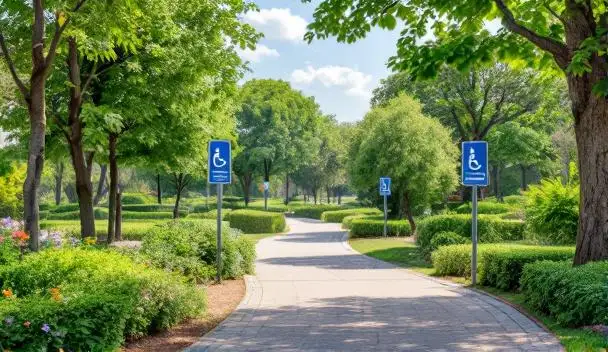
Autism and Deafness: An Overlap with Complex Challenges
Autism spectrum disorder (ASD) and deafness are distinct conditions with unique characteristics, yet their intersection presents complex diagnostic and intervention challenges. Research indicates that children who are Deaf or Hard of Hearing (D/HH) are at a higher risk of also being diagnosed with ASD, with prevalence estimates reaching up to 7-9%. Recognizing and addressing the co-occurrence of these conditions is critical for timely intervention and effective support, but overlapping symptoms and diagnostic difficulties often delay proper diagnosis and tailored treatment. This article explores the relationship between autism and deafness, the challenges faced in diagnosis, recent scientific findings, and comprehensive approaches to support affected children. Understanding the biological, clinical, and social dimensions of ASD within deaf populations can facilitate better awareness, early detection, and improved quality of life for these individuals.
The Overlap Between Autism and Deafness: Prevalence and Shared Features

What is the relationship between autism spectrum disorder (ASD) and deafness?
Autism spectrum disorder (ASD) and deafness often coexist more frequently than seen in the general population. Research indicates that approximately 1 in 59 children with hearing loss are also on the autism spectrum. This co-occurrence can complicate diagnosis because many signs of ASD—such as language delays, social withdrawal, and behavioral challenges—overlap with symptoms caused by hearing impairment.
Diagnosing ASD among deaf children presents additional challenges. Standard assessment tools like the Autism Diagnostic Observation Schedule (ADOS-2) and the Autism Diagnostic Interview-Revised (ADI-R) have limited validation for deaf populations, making nuanced assessments necessary. Furthermore, communication barriers, even with sign language interpreters, can lead to missing critical cues of autism.
Children with hearing loss may have different types of auditory issues, including sensorineural loss, conductive problems, or auditory processing disorders. These auditory difficulties can influence language development and social engagement, often mimicking or masking symptoms of autism.
Early detection is vital for effective intervention. Because signs of ASD can be mistaken for or attributed to deafness, specialized, culturally attentive assessment approaches are essential. A multidisciplinary team—including audiologists, psychologists, speech-language pathologists, and other specialists—plays a crucial role in distinguishing between the two conditions and planning appropriate interventions.
Effective early intervention tailored to the child's unique needs can foster better communication skills, social interactions, and overall development. These programs may include visual supports, sign language, speech therapy, and auditory training, depending on the child’s specific profile.
Prevalence of autism in D/HH children
Studies have consistently shown a higher prevalence of autism among children who are deaf or hard of hearing. While the general population estimates ASD at about 1.7% to 2%, among D/HH children, the estimates range from 7% to over 9%. This suggests that children with hearing impairments are at significantly increased risk for autism.
Research indicates that up to 50% of autistic youths exhibit altered hearing levels, mainly sensorineural hearing loss. This is a notable increase compared to 15% in nonautistic youths, emphasizing a potential linkage between auditory and neurodevelopmental conditions.
The relationship between hearing impairment and autism appears to be partly due to shared or similar underlying causes. Factors such as prematurity, congenital cytomegalovirus (CMV) infection, and genetic syndromes—including fragile X, CHARGE syndrome, Trisomy 21, and Usher syndrome—have been associated with both conditions.
Shared symptoms such as language delay and social withdrawal
In children with both autism and hearing loss, overlapping symptoms can make diagnosis challenging. For instance, language delay—a hallmark of ASD—can also occur as a consequence of hearing impairments. Children may also exhibit social withdrawal, lack of eye contact, and unusual interests, which are features common in both conditions.
Repetitive behaviors, sensory sensitivities, and resistance to change are additional shared features. However, understanding the context is important because these behaviors might stem from hearing difficulties rather than autism.
Careful observation and assessment help distinguish behaviors caused by deafness from those indicative of ASD. For example, a child’s failure to respond to sound or social cues may be due to hearing loss rather than social disinterest associated with autism.
Significance of early detection and intervention
Early diagnosis of ASD in children with deafness is crucial to improving outcomes. Delays—on average, around three years later than hearing children—can hinder access to support services, language development, and social skills.
Recognizing autism in deaf children requires specialized strategies. Adapted assessment tools, such as caregiver-mediated telehealth assessments and modified versions of standard tests, are becoming more validated but still require further research.
Timely intervention can include visual supports, structured routines, sign language instruction, and auditory training. These approaches are designed to address both hearing and autism-related challenges, promoting better communication and social success.
Interdisciplinary teams are vital in implementing these strategies. They consider cultural and linguistic needs, ensuring assessments are sensitive and accurate.
In summary, understanding the substantial overlap between ASD and deafness underscores the need for early, culturally competent evaluation and tailored interventions. Such efforts can significantly improve quality of life and developmental trajectories for affected children.
| Aspect | Details | Additional Notes |
|---|---|---|
| Prevalence of ASD in Deaf Children | 7% to 9% | Higher than general population (1.7%-2%) |
| Common Symptoms | Language delays, social withdrawal, repetitive behaviors | Overlap complicates diagnosis |
| Shared Etiologies | Prematurity, genetic syndromes, congenital infections | Similar underlying causes |
| Diagnostic Challenges | Lack of validated tools, communication barriers | Specialist assessment needed |
| Intervention Strategies | Sign language, visual supports, speech therapy | Tailored to individual needs |
| Importance of Early Detection | Improves social and communicative outcomes | Delays can hinder development |
| Assessment Tools | Modified ADOS-2, tele-assessment | Emerging validation |
Understanding the connection between autism and deafness is essential for supporting these children through early, appropriate, and culturally sensitive interventions. The collaborative effort of professionals across disciplines holds promise for better diagnosis, management, and improved quality of life.
Diagnostic Challenges and Assessment Strategies
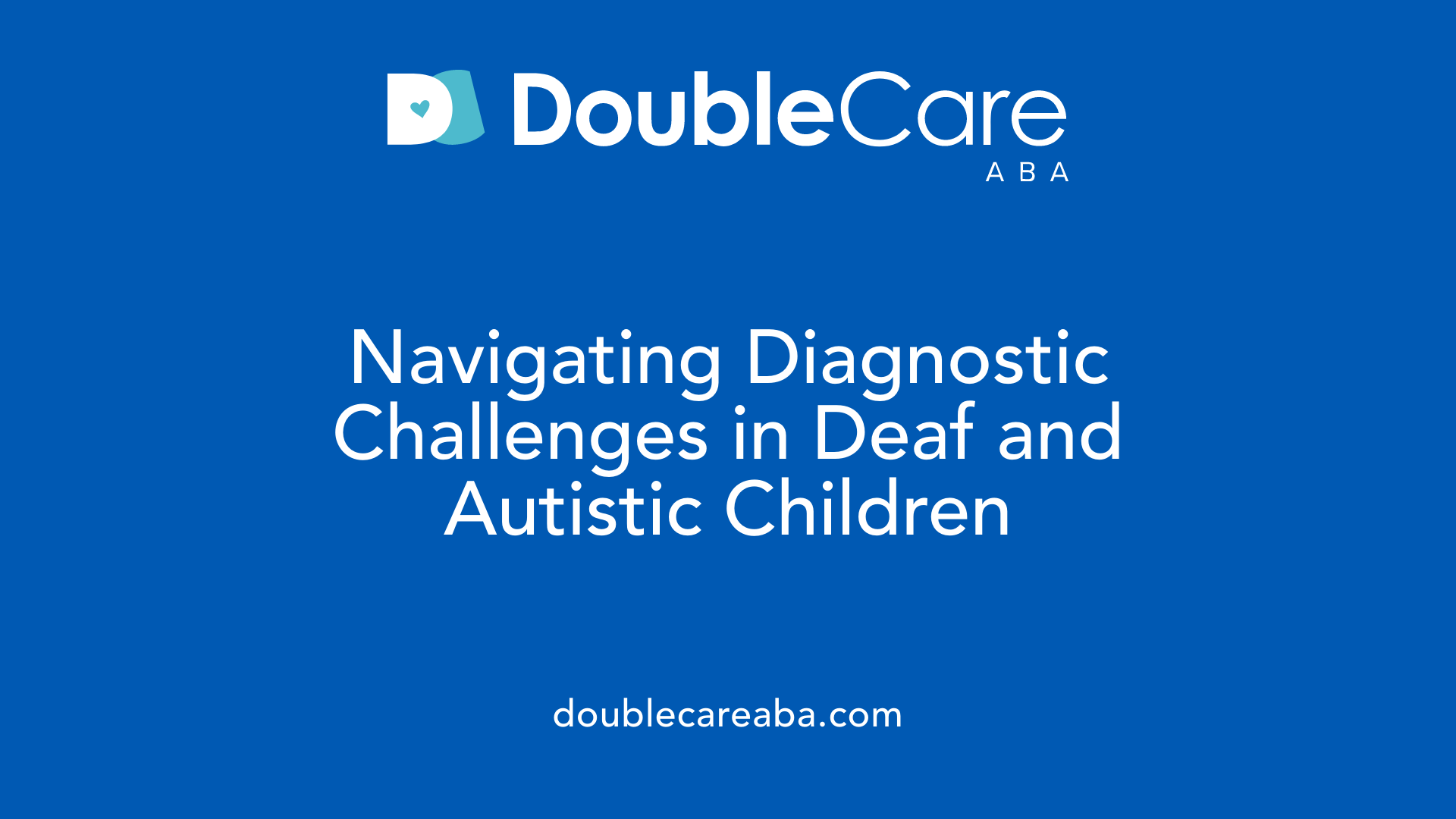
What are the challenges in diagnosing autism in children with hearing impairments?
Diagnosing autism spectrum disorder (ASD) in children with hearing impairments (D/HH) presents a complex set of challenges. Many signs of autism, such as delayed speech, social withdrawal, and repetitive behaviors, can overlap with symptoms caused by hearing loss itself. This overlap makes distinguishing between behaviors driven by deafness and those indicative of autism difficult.
Standard ASD screening tools like the Modified Checklist for Autism in Toddlers (M-CHAT) or the Social Communication Questionnaire (SCQ) are often less effective for D/HH children because these instruments are usually designed with hearing children in mind. They may not account for communication differences in deaf children, leading to missed or false-positive diagnoses.
Moreover, there is a notable lack of assessment instruments specifically validated for D/HH populations. This gap results in reliance on clinician judgment, which can vary based on experience and training. Children are frequently diagnosed later than their hearing peers—often around 5.5 to 6.5 years of age instead of around 3 years—due to these assessment limitations and the subtlety of autism symptoms amid sensory differences.
Limited access to clinicians who are proficient in both deafness and autism further complicates early and accurate diagnosis. This scarcity can lead to underdiagnosis or delayed identification, impacting early intervention and support.
Overall, overcoming these diagnostic hurdles requires a comprehensive, interdisciplinary approach. Such assessments should adapt existing tools, incorporate thorough developmental histories, and involve clinicians trained in both deafness and autism. The integration of clinical judgment with tailored evaluation strategies is critical for accurate diagnosis.
Adaptations of assessment instruments like ADOS-2 and ADI-R
The Autism Diagnostic Observation Schedule (ADOS-2) and Autism Diagnostic Interview-Revised (ADI-R) are gold-standard assessment tools for autism. Recent efforts have focused on modifying these instruments to better suit the D/HH population. These adaptations include sign language modifications, scoring adjustments to account for communication modality differences, and the inclusion of visual supports.
Preliminary studies have shown that adjusted scoring and tailored procedures can improve the validity of these tools within deaf populations. For example, sign language modifications require evaluators to interpret behaviors within the context of signed communication, ensuring that behaviors attributable to deafness are not misclassified as autism symptoms.
However, these adapted tools still require further validation to establish their diagnostic accuracy across diverse deaf communities. Ongoing research aims to standardize these modifications and evaluate their effectiveness, enabling more reliable early diagnosis.
Role of interdisciplinary teams and clinical judgment
Given the complexities involved, a multidisciplinary team is essential in assessing D/HH children for autism. Team members often include audiologists, speech-language pathologists, psychologists, developmental pediatricians, and deaf educators.
This team collaborates to interpret behavioral observations, review medical and developmental histories, and conduct assessments—in both in-person and virtual formats when necessary, such as during COVID-19 adaptations.
Clinical judgment plays a crucial role, especially when standardized assessments have limitations. Experienced clinicians consider cultural and linguistic factors, sensory profiles, and individual development trajectories to differentiate autism from behaviors associated with deafness.
Interdisciplinary collaboration ensures a comprehensive understanding of each child’s unique profile, leading to more accurate diagnosis and personalized intervention planning.
Case studies illustrating diagnostic complexities
Consider the case of a five-year-old child who is deaf and exhibits delayed speech, echolalia, and social withdrawal. Standard autism screening might suggest ASD, but further assessment reveals these behaviors stem from language deprivation rather than autism.
In another scenario, a child with hearing loss shows repetitive behaviors and difficulty with social engagement. The assessment team adjusts their tools to include sign language interactions, revealing that certain behaviors are typical responses to communication barriers, not autism.
These examples highlight the importance of tailored assessment strategies and experienced clinical judgment to accurately diagnose autism in deaf children. Early and precise diagnosis enables targeted interventions that support language development and social skills, ultimately improving outcomes for these children.
Impact of Hearing Loss and Auditory Processing on Autism Symptoms
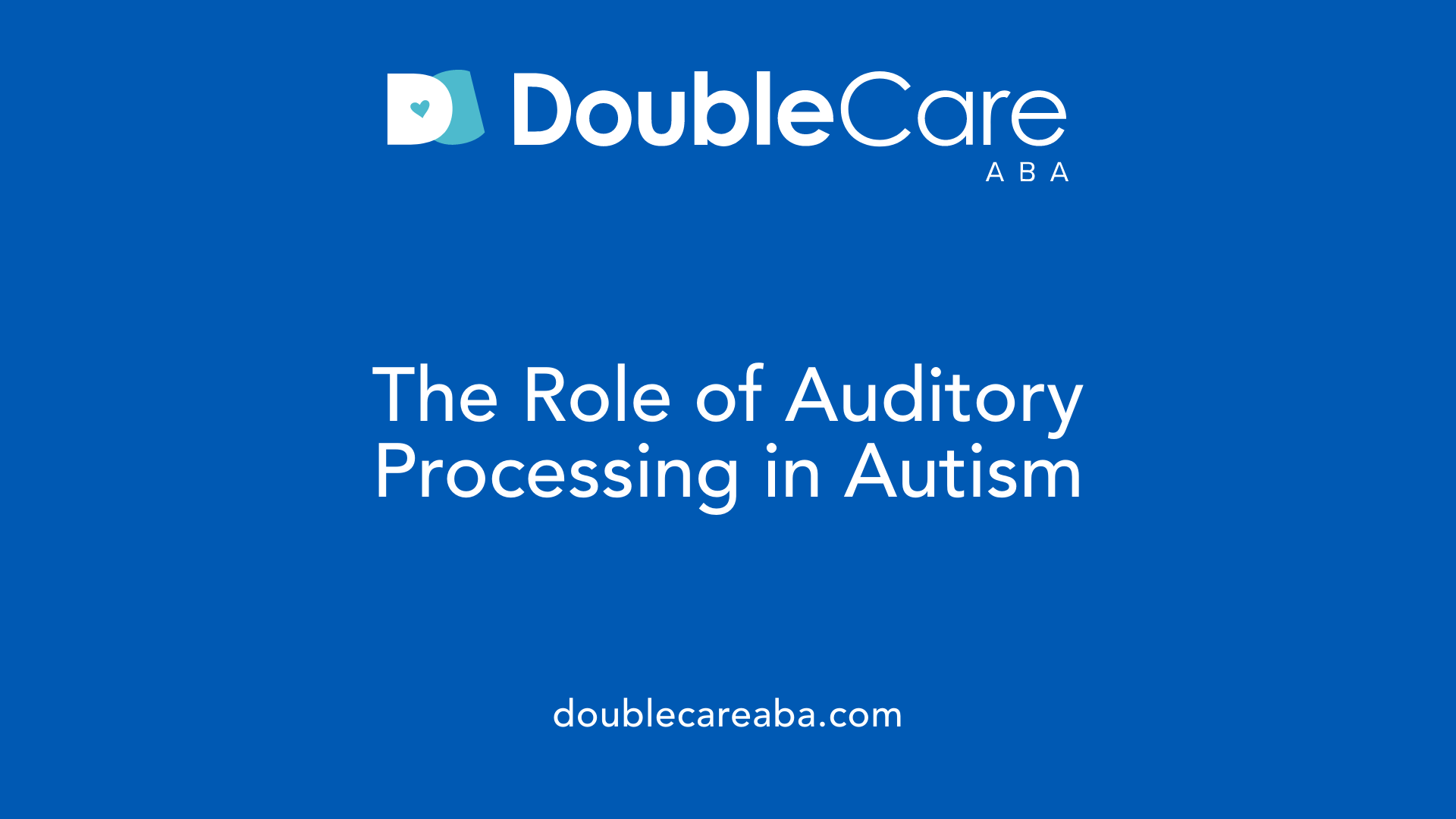
How do hearing loss and auditory processing disorders affect autism symptoms?
Hearing loss and auditory processing disorders (APD) can markedly shape the presentation of autism symptoms by intensifying existing communication and sensory challenges. Many individuals with ASD are hypersensitive to certain sounds, such as loud noises, which can lead to sensory overload and increase stress levels. Difficulty in filtering speech from background noise impairs effective communication and can cause frustration or withdrawal from social interactions.
In addition to hyper-responsiveness, some autistic individuals exhibit hypo-reactivity, meaning they may not respond to auditory stimuli as expected, further complicating social engagement and learning processes.
Underlying neural mechanisms involved in these auditory differences include altered connectivity in the auditory pathways and variations in brain regions responsible for sound interpretation. For example, abnormal activity in the auditory cortex and impairments in neural circuits that process sound nuances can lead to atypical auditory perceptions, such as difficulty recognizing speech tones or differentiating environmental sounds.
These auditory sensitivities and processing discrepancies contribute to behavioral issues such as heightened anxiety, difficulty participating in group settings, and challenges with language comprehension. Recognizing and addressing these auditory factors are crucial for creating effective, personalized interventions for those on the spectrum.
Sensorineural hearing loss and auditory processing disorders in ASD
Research indicates that a significant portion of children and adults with ASD also experience sensorineural hearing loss or auditory processing disorders. Studies show that up to 55% of individuals with ASD exhibit abnormal findings in audiological assessments, such as unusual sensitivities or involuntary muscle contractions within the ear.
Sensorineural hearing loss, particularly in the middle frequency range (~2000Hz), can distort speech and hinder language development. Similarly, APD affects how sound is processed in the brain, resulting in difficulties understanding speech in noisy environments, recognizing emotions conveyed by tone, and distinguishing between similar sounds.
These auditory deficits often overlap with core autism symptoms, making diagnosis and intervention more complex. For instance, auditory processing issues can be mistaken for social or communication impairments, leading to delays in providing appropriate support.
Sensory sensitivities such as hyperacusis and hypo-reactivity
Sensory sensitivities are common in autism. Hyperacusis, or sound hypersensitivity, causes certain sounds to become overwhelming or intolerable, which can trigger meltdowns or withdrawal. Conversely, hypo-reactivity involves diminished or absent responses to sounds, making it hard to detect distress or danger cues.
Both conditions significantly influence behavior and emotional regulation. Tailored environments with reduced noise levels or the use of visual supports can help manage these sensitivities and improve quality of life.
Neural mechanisms and brain regions involved in sound processing in ASD
Neuroimaging studies highlight that individuals with ASD often show atypical activity and connectivity in auditory-related brain regions, such as the auditory cortex, superior temporal gyrus, and the cerebellum. These differences affect how sounds are perceived and interpreted.
Altered neural responses may also involve glial cell dysfunction, neuroinflammation, and changes in myelination, impacting neural speed and efficiency in auditory pathways. Mutations in genes like MEF2C are associated with both hearing deficits and ASD-like behaviors, emphasizing genetic contributions to neural development and auditory processing.
Understanding these neural mechanisms provides insight into why auditory sensitivities manifest uniquely in autism and support the development of targeted therapies.
Effects of auditory deficits on social interactions and communication
Auditory processing difficulties hinder typical social engagement. For example, children and adults with ASD may struggle with the emotional nuances in speech, such as tone and pitch, which are vital for understanding social cues. This can result in misunderstandings, social withdrawal, and reduced reciprocal interaction.
Additionally, challenges in processing auditory information can lead to delayed or atypical language development, further isolating the individual and affecting peer relationships.
Interventions that address both auditory processing and social communication—such as visual supports, music therapy, and adaptive listening devices—are essential for improving social outcomes.
| Aspect | Description | Impacts on Autism |
|---|---|---|
| Hearing Loss | Sensorineural or conductive deficits impair sound perception | Can lead to delayed language, social withdrawal |
| Auditory Processing Disorder | Difficulties interpreting sounds despite normal hearing | Contributes to communication challenges, sensory overload |
| Sensory Sensitivities | Hyperacusis or hypo-reactivity to sounds | Influence behavior, induce stress or indifference |
| Neural Brain Regions | Altered activity in auditory cortex, related circuits | Affect sound perception, emotional interpretation |
| Social & Communication Effects | Impact on language development, social cues | Lead to social isolation, misunderstandings |
This comprehensive understanding underscores the importance of tailored auditory assessments and interventions. Managing sensory sensitivities and improving auditory processing can significantly enhance social and communication skills in individuals with autism.
Recent Scientific Discoveries Linking Autism and Deafness
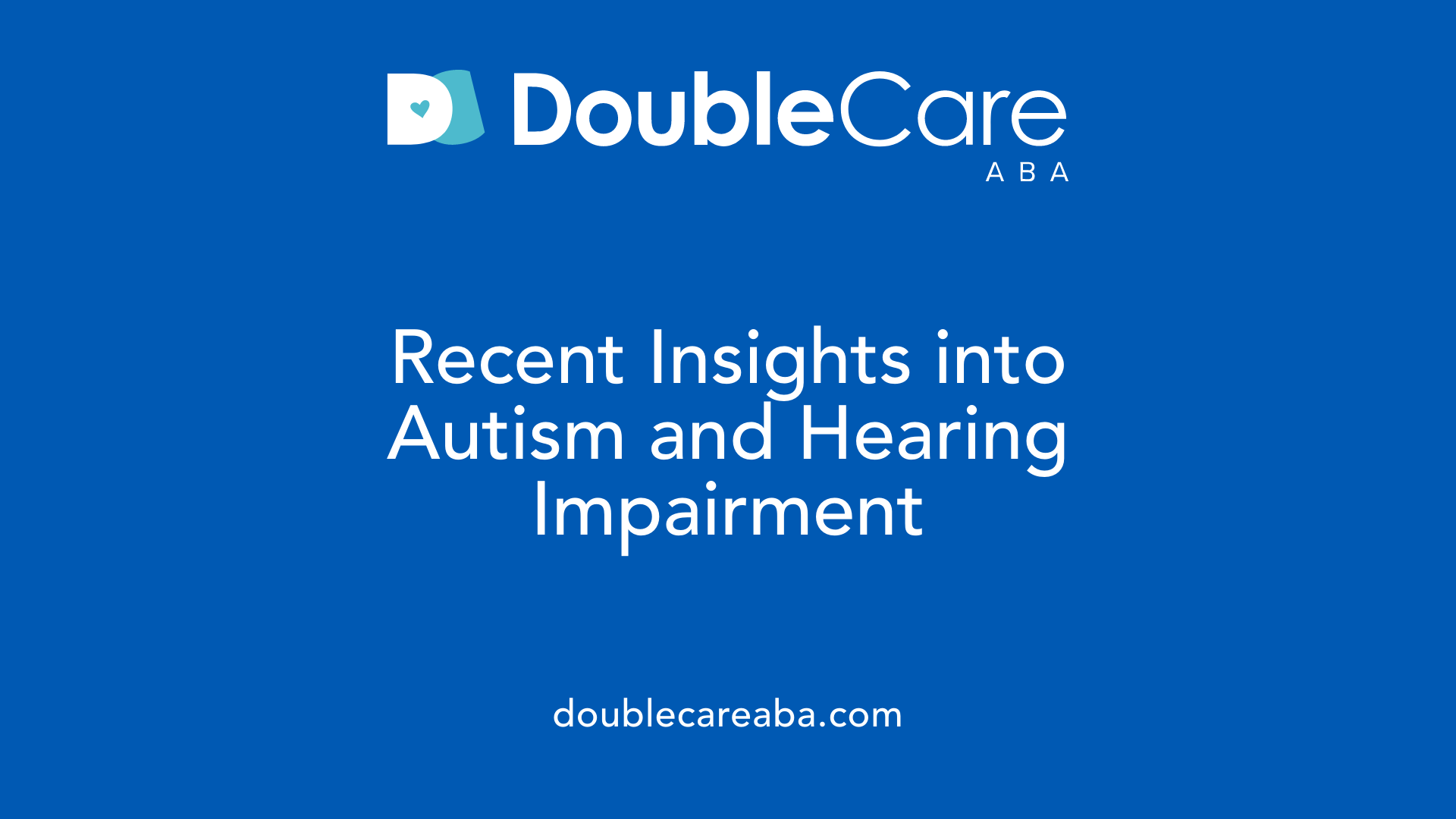
What are the recent scientific findings on the connection between autism and deafness?
Recent research has revealed a notable link between autism spectrum disorder (ASD) and hearing impairments, especially in children who are Deaf or Hard of Hearing (D/HH). Studies estimate that the prevalence of autism in D/HH children is around 7% to 9%, significantly higher than the approximately 1.7% to 2% observed in the general population.
Many autistic children also exhibit different types of hearing issues, with about half showing altered hearing levels, mainly sensorineural hearing loss. Auditory neuropathy, a condition affecting nerve signals from the ear to the brain, is also common. These auditory challenges can overlap with autism symptoms, such as delayed speech, social withdrawal, and sensory sensitivities, complicating early diagnosis.
Genetic syndromes often found in both populations, such as fragile X syndrome, CHARGE syndrome, and Trisomy 21, have been associated with increased risks of both autism and deafness. For example, mutations in specific genes can simultaneously impact hearing development and brain connectivity, highlighting underlying shared etiologies.
Animal models provide deeper insights into this connection. Research using mice with mutations in genes like MEF2C demonstrates that auditory deficits may influence broader neurodevelopmental pathways associated with autism. These mice show hearing impairments, cellular degeneration in auditory nerves, and increased inflammation — phenomena reminiscent of age-related degeneration but occurring early due to genetic factors.
Furthermore, studies indicate that immune system activity might play a role in this relationship. For instance, inflammation and glial cell abnormalities observed in auditory tissues suggest that neuroinflammatory processes common in autism could also affect auditory nerve and ear development.
Genetic factors such as the MEF2C gene are particularly relevant. MEF2C is involved in ear formation and neural connectivity. Mutations or reductions in this gene can lead to hearing impairments and autism-like behaviors, including communication difficulties and hyperactivity. These findings underline the importance of sensory organs’ interactions with brain development.
Overall, these scientific discoveries underscore a complex interplay between hearing deficits and autism. Recognizing auditory contributions to neurodevelopmental challenges can guide more precise diagnostics and stimulate the development of tailored therapies, including early audiological intervention and neuroimmune treatments.
Understanding these links guides ongoing research efforts to create better screening tools, especially adapted assessments considering communication differences in D/HH populations. Interdisciplinary collaborations among audiologists, geneticists, neuroscientists, and clinicians are essential in unraveling this relationship, ultimately improving life quality and developmental outcomes for affected children.
Support Strategies and Medical Interventions
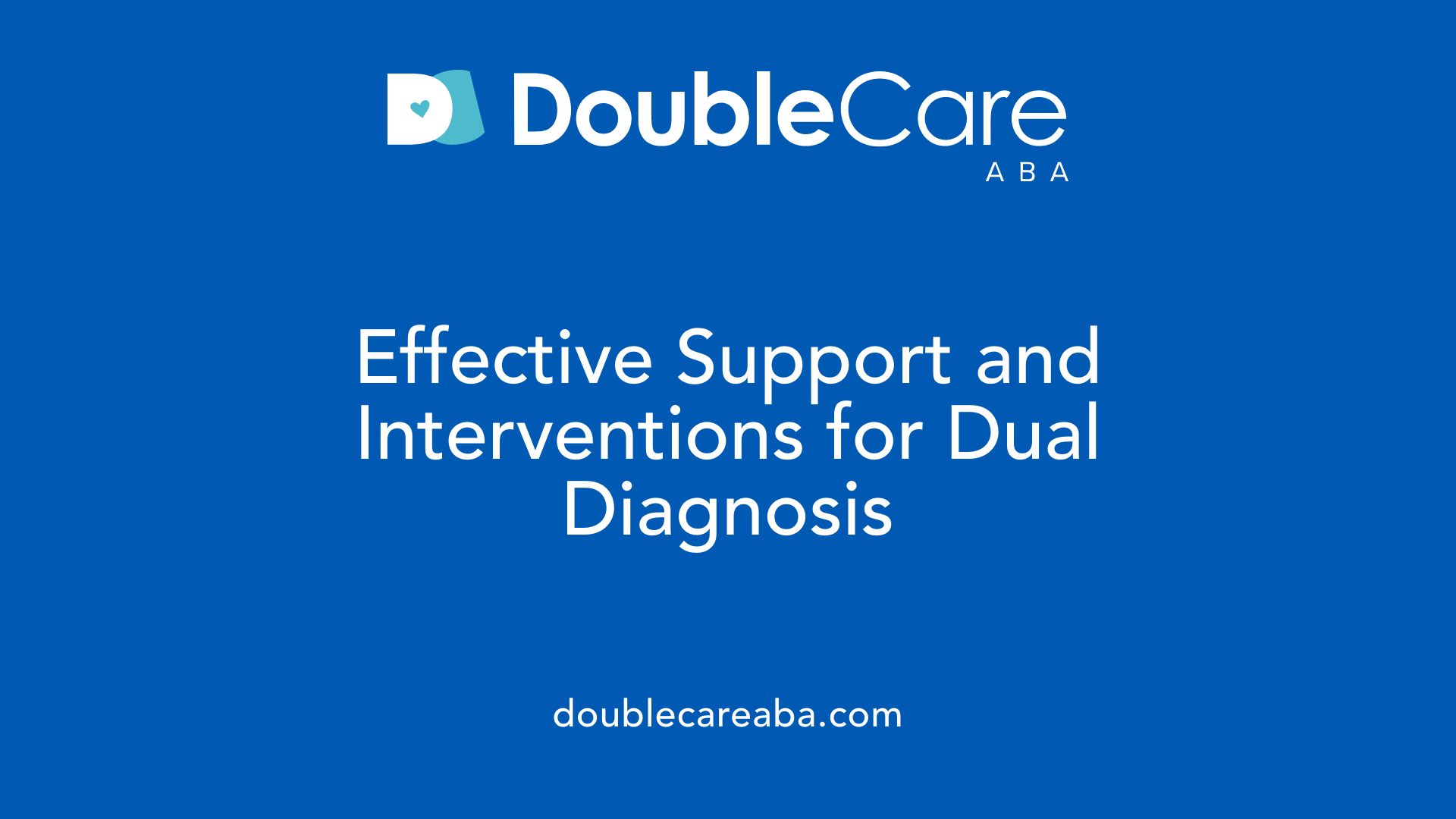
What support and intervention strategies are effective for children with both autism and hearing impairments?
Supporting children who experience both autism spectrum disorder (ASD) and hearing loss requires a comprehensive and personalized approach. Evidence-based behavioral interventions such as Applied Behavior Analysis (ABA) are often used to improve social, communication, and adaptive skills. These programs are tailored to each child's specific needs, emphasizing positive reinforcement and naturalistic teaching methods.
Audiological support plays a critical role as well. Technologies like cochlear implants and hearing aids can help improve access to sound, which is vital for language development and social interaction. Auditory training programs further enhance a child's ability to process sounds effectively.
Visual supports and augmentative and alternative communication (AAC) devices are particularly useful. These tools, which include picture exchange systems and sign language, help children with communication challenges express their needs and participate in social activities. Pragmatic language interventions focus on practical language use to facilitate interactions in everyday settings.
Supporting children also involves collaboration among multiple professionals. Interdisciplinary teams typically comprise audiologists, speech-language pathologists, behavior analysts, educators, and family members. This team works together to craft individualized intervention plans that consider the child's unique auditory and behavioral needs.
Functional Behavioral Assessments (FBA) and Functional Communication Training (FCT) are employed to understand and modify problematic behaviors and to promote effective communication. These strategies assist children in replacing challenging behaviors with appropriate communication methods.
Early intervention is crucial. Initiating support during critical developmental periods leads to better outcomes in language and social skills. Families are integral to this process, receiving training and support to promote consistent reinforcement and generalization of skills across different environments.
Utilizing inclusive educational practices and leveraging assistive technologies ensures children can participate actively in school and community settings. These combined strategies help maximize a child's potential by addressing the overlapping challenges of autism and hearing impairments.
Moving Toward Better Understanding and Support
Advances in research and clinical approaches have improved our understanding of the complex relationship between autism and deafness. Recognizing the high prevalence of co-occurrence and the unique manifestation of symptoms in this population underscores the importance of early, multidisciplinary assessments. Tailored interventions that incorporate visual supports, auditory devices, and behavioral therapies can significantly enhance communication, social skills, and overall wellbeing. Continued efforts in research, training, and advocacy are essential for developing culturally sensitive assessment tools and effective support systems, ensuring that deaf and autistic individuals receive the understanding and resources they deserve. Building awareness and fostering inclusive environments will ultimately bridge gaps and promote greater acceptance and opportunities for all.
References
- Assessing Autism in Deaf/Hard-of-Hearing Youths: Interdisciplinary ...
- Gallaudet psychology expert raises awareness about autism in deaf ...
- Beyond the brain: A link between hearing loss and autism spectrum ...
- How autism and auditory processing disorder affect hearing
- The Deaf Autism Project - Boston University
- Deafness and autism
- Audiometric profiles in Autism Spectrum Disorders: Does subclinical ...
- Confusion at the crossroads of autism and hearing loss
- Is It Autism or Hearing Loss? | South Valley Ear Nose & Throat | Blog
















